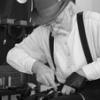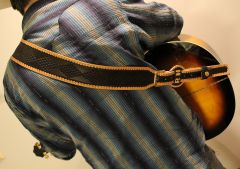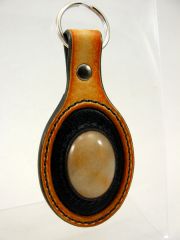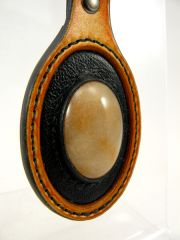-
Posts
417 -
Joined
-
Last visited
About Leatherimages
- Birthday 04/24/1950
Contact Methods
-
Website URL
http://Leatherimages.com
Profile Information
-
Gender
Male
-
Location
Prescott, Arizona
-
Interests
Mythology
LW Info
-
Leatherwork Specialty
Boot Maker/LeatherMaker
-
Interested in learning about
all aspects
-
How did you find leatherworker.net?
Shop Talk article Jan/09
Recent Profile Visitors
Leatherimages's Achievements

Member (2/4)
-

Hand Made Boots Inspired By Merrell
Leatherimages replied to BorisVanJr's topic in Shoes, Boots, Sandals and Moccassins
Surly you would needed a post machine to do the heel area, or even around the eyelet section, as that would never lay flat for stitching on a table machine such as you've shown? I would also think a roller would be the only way to get such a nice stitch, instead of using that walking foot. Are you sure you don't have on of those? -

Hand Made Boots Inspired By Merrell
Leatherimages replied to BorisVanJr's topic in Shoes, Boots, Sandals and Moccassins
Well for the first pair ever made, you sure do show mastery of some very difficult techniques! And you must have access to some pretty specific machinery too. Very admirable. Paul -

Hand Made Boots Inspired By Merrell
Leatherimages replied to BorisVanJr's topic in Shoes, Boots, Sandals and Moccassins
I'm curious about why there is a LOWA label on the tongue? -
- 2 comments
-
- chancey77
- ronnie hymes
-
(and 5 more)
Tagged with:
-

Bespoke Shoemakers: The Best Sewing Machine To Use?
Leatherimages replied to khopper117's topic in How Do I Do That?
Art's suggestions are good to start. It's a process. Also, you might want to loose the "cobbler" reference. It's a derisive term to makers. Use cordwainer. HCC.org for research. Some tools to start - http://www.unitedglobalsupply.com/shoemaking/shoe-machine-supplies.html -

How To Measure Someone For A Custom Name Belt
Leatherimages replied to chancey77's topic in How Do I Do That?
Experience has told me, one needs to add an additional 1/2" (3cm) or so, for the thickness of the belt. That is if the measure has been obtained from a thin tape such as the one shown. It's also worth considering the type of buckle and how it will be worn for the front center: If a heel bar buckle. the bar will line up on the "gig line", the overlap of pants. If a center bar buckle, the center will be on the fold of the belt around the bar. If a trophy style buckle, the center for measure would be between the bar and prong. There's more to this than meets the eye, but if you have it all in front of you, it can be figured out with observation. Paul -

Concho Triads
Leatherimages replied to Leatherimages's topic in Shoes, Boots, Sandals and Moccassins
Thank you for your comments. -

Free Patterns - Bags Purses And Hats
Leatherimages replied to DebHop's topic in Patterns and Templates
One presumes the sizing is left up to the maker. And therefore, the proportions of all the pieces. Is that how you see it? -
This pair of boots was a design choice for a lady who is on the short and stout side. I suggested that the triad design, with it's side panels extending all the way to the sole/heel edge, would lengthen her legs, and the neutral color would direct attention to the Ostrich. The side conchos and mountain images are tooled and colored on milled veg tan. Thanks for looking.
-

Key Fob with cabochon stone mount
Leatherimages commented on JustKate's gallery image in Our Leatherwork Galleries
-

Key Fob with cabochon stone mount
Leatherimages commented on JustKate's gallery image in Our Leatherwork Galleries
-
Thank you all for the comments.
-
I was asked to show these, which was my entry to the Art of the Cowboy Makers show this past June. Please excuse the repeat if it is.
-

Midsole Leather Weight Inquiry
Leatherimages replied to PaxAddict's topic in Shoes, Boots, Sandals and Moccassins
Michael, Bespoke is not a style, it is an adjetive for the item for which you made the patterns for a particular person. It's as if to say, "that pair is spoken for". Channeling an insole is how some would make a holdfast. There's a few choics of technique for inseaming, which it sounds like you're doing in this part of the conversation. Show us a drawing so we can help. There's really "nothing new under the sun". Paul




















